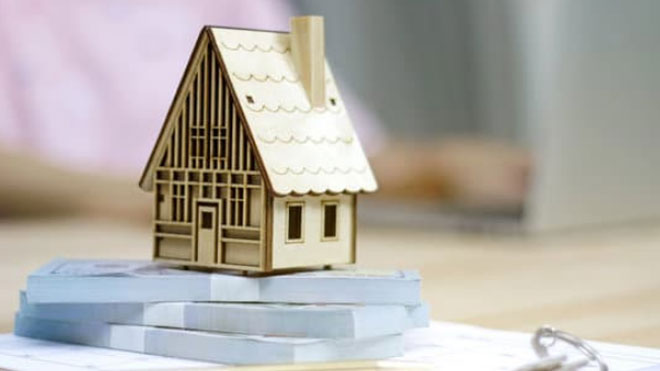Every month, about 600,000 Canadians are preparing for moving day.
This translates into more than 4 million Canadians changing homes every year (the same is true for almost 40 million Americans), and most moves occur during the summer months. Surprisingly, more people choose to migrate to the Western parts of the country, where the population has surpassed that on the other side of Ontario, with Alberta claiming the highest number of new residents.
While it’s safe to claim that moving is stressful for most people who choose to change their homes, many negatives affecting the experience can be minimized. For example, many choose not to create a special budget for moving, thus increasing the risk of unexpected costs and more stress.
If you’re among those planning to move soon, you absolutely need to get real about the current and future expenses. In other words, you need to have a clear budget in mind to ensure that the moving day goes as smoothly as possible.
Here’s how to do it.
1. Come up with a List of all Expenses
The cost of moving depends on a lot of factors, and you should try your best to know each one before requesting a moving quote. Even though the list of factors differs in each case, here are the most common ones.
Expenses for Hiring Movers
- Costs for hiring professional movers (base moving fee, moving insurance, and optional charges that they’ll let you know about as you work out a plan)
- Keep in mind that professional movers may impose additional fees based on the size and weight of your items (basically, the more things you have, the more you’ll pay)
- The distance to the new home. The longer the distance, the higher the fees for truck rental (the average cost of moving a truck ranges between $20 and $100 per day).
Expenses for Moving on your Own
- Truck rental. As mentioned above, the cost can reach up to $100, but the total amount also depends on the distance (keep in mind that many rental companies also require you to return the truck with a certain amount of gas left in the tank)
- Gas. plan the gas expenses because you’re the one responsible for them. AAA’s Gas Cost Calculator could come in handy here as it determines the cost of driving between points specified by the user
- Equipment rental. Dollies, moving blankets, and other equipment: if you don’t have those, you’ll need to rent it from the moving company
- Storage costs. If there’s a chance that you won’t be able to take all your stuff with you at once, be sure to plan some costs for renting storage units
- Packing. Boxes, packing wrap, dividers, packing tape, labels, etc. – those are unavoidable expenses that absolutely need to plan for. They are kinda hard to predict (who knows how many moving boxes you’ll need, right?), so be sure to take a look at your things and make a list of those that need to go in the boxes
- Cleaning. If you’re moving out of a rental apartment, then you might be required to clean it for the next tenants. If you’re thinking about doing it yourself, then account for cleaning supplies, but keep in mind that a cleaning company is also an option if you’re in a hurry.
- Bond. In Australia, moving to a rental property would require a payment for a bond. It serves as insurance for the landlord for unpaid rent and repair at the end of your tenancy. Usually, you will also need to pay four weeks’ rent in advance to the property management. If you need financial assistance to pay this expense, consider getting a bond loan.
Of course, this is by no means an exhaustive list because even the best writing companies won’t be able to give you an accurate estimate at this point. For example, there are also potential costs of buying new furniture and appliances at the new place and numerous other expenses.
Oh, and one last thing: if you have friends helping you with moving, make sure to buy some snacks, drinks, and gifts for them. They’re awesome!
Reality check: holding onto things that you don’t really use is a bad idea, so consider throwing them away. Not only they’ll take more space in your new home but also add more moving costs.
2. Create a Budget Estimate
The next step is to add the costs of moving with the cost of living during that period. First, start adding the costs you’ve come up with. However, keep in mind that the total number represents the cost of actual moving, which is not everything.
The next number in your budget covers living costs. By knowing this number, you’ll know how much you need to have before moving out. For example, keep track of your spending for a week (meals, etc.) because you’ll have to have that amount of money to be financially secure during the moving period.
Take Charge America’s Monthly Expenses Calculator may come in handy for you here, as it helps to recall and itemize your living expenses.
Now, add the living costs and moving costs together. Great, you have a much better idea of how much you’ll have to spend on moving.
Reality check: if you can’t save enough to be financially secure even by making cuts, it’s best to wait a bit more.
3. Plan Some Losses
Even the best packers and movers in the world can’t guarantee that everything you have will make it to the final destination in one piece. There’s always a chance of something getting broken, and often these costs reach up to 10 percent of the moving budget.
To account for the costs of broken items, be sure to add at least 5 percent to your budget.
The things that are more likely to get broken or damaged during the move are:
- Kitchenware: glassware, dishes, and china. They might be fragile and can easily shatter in case you pack them tightly. To minimize the chance of turning them into pieces, use dividers and partition boxes
- Furniture edges: sofa arms, table legs, desk legs, etc. If possible, disassemble your furniture and wrap each part separately
- Lamps. These are delicate items that also should be disassembled to minimize the risk of getting broken.
Reality check: breaking a thing or two is inevitable, so just accept it. However, packing everything individually will dramatically increase the chances of having all your precious stuff in one piece.
Conclusion
So, that’s how you get real about your moving expenses. Preparation is king here, and once you’ve created a budget estimate based on the above tips, you can get a good idea of what the real cost will look like. If you find the final figure to be too high, be sure to take a closer look at the most expensive items and adjust the costs where possible.









